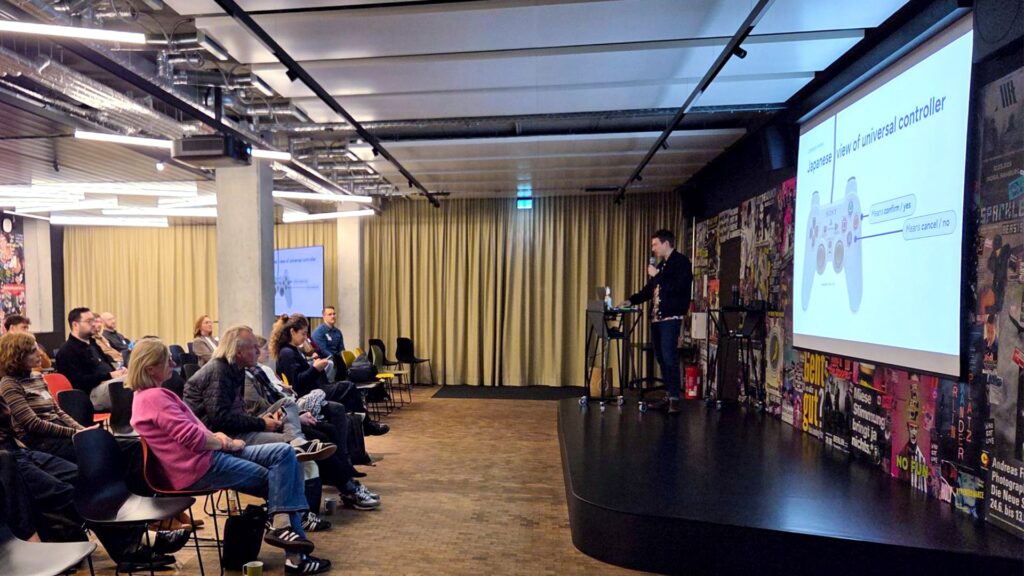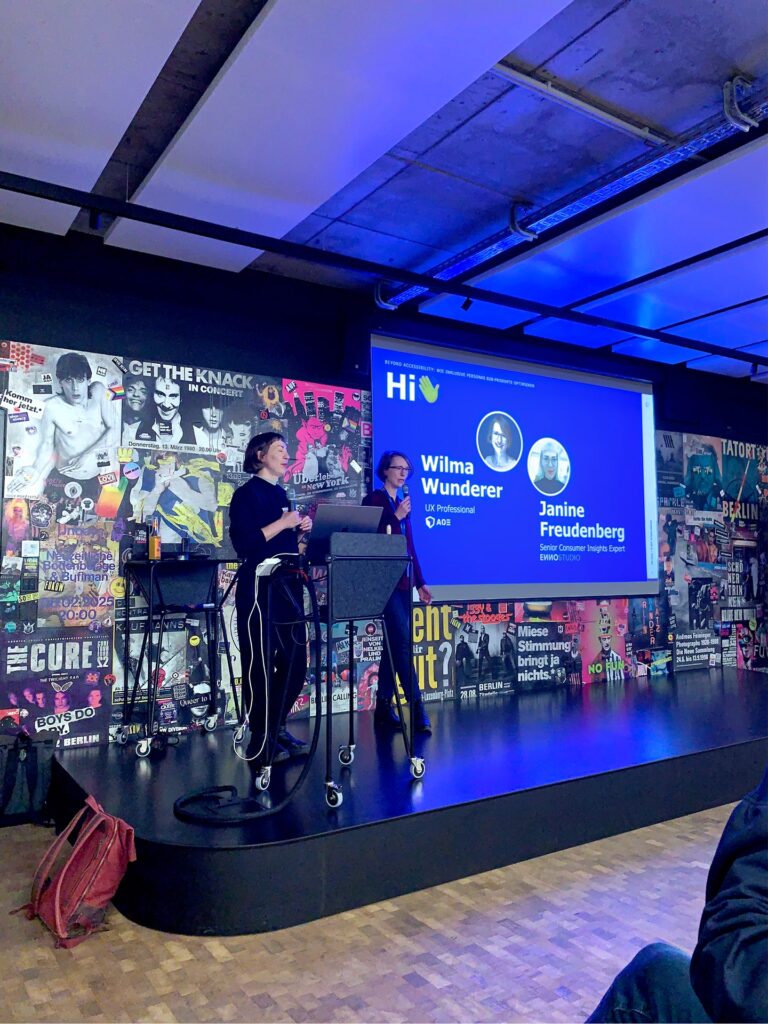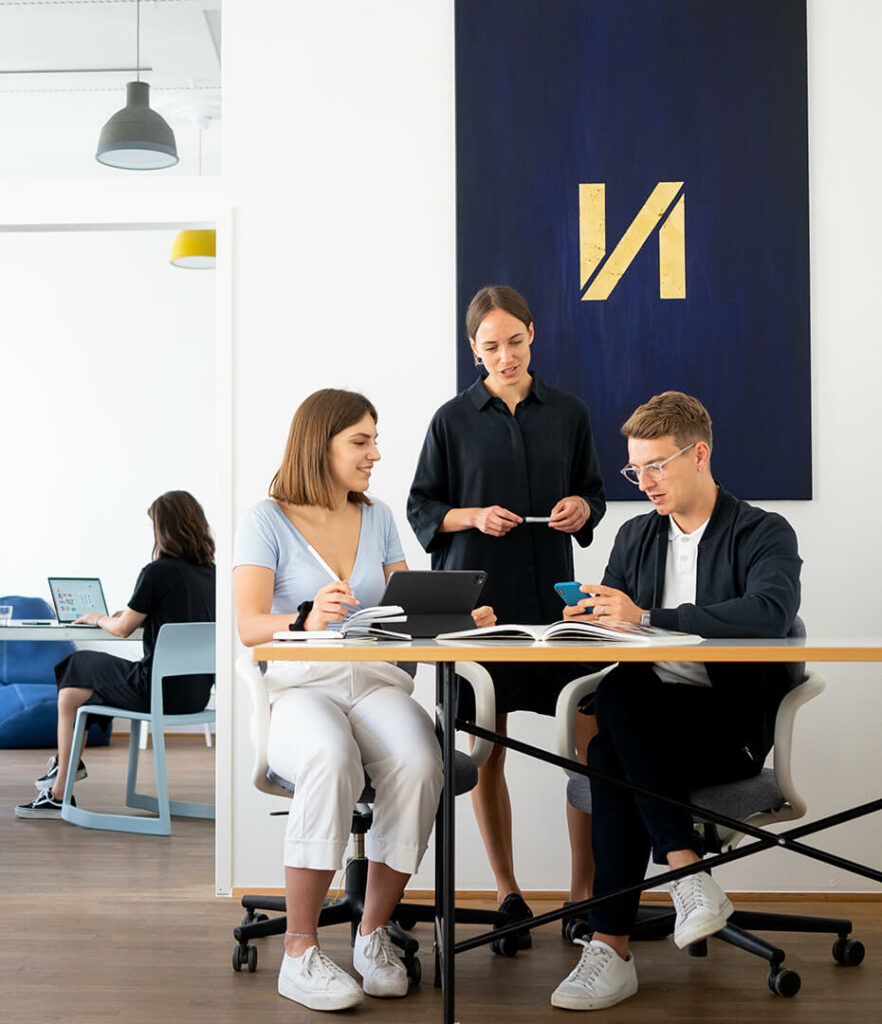Conferences 2025
World Usability Day 2025 – Our key takeaways
The first talk from Userlutions’ founder Birgit Bärnreuther started with a simple warm-up questionnaire for the audience regarding their attitude towards and usage of research. The result was striking: More than 80% of app features are never used or even discovered by users.
This number stayed with us. It reminded us of that all-too-familiar scenario: A team introduces a feature concept, iterates on it across endless stakeholder meetings, develops it, fixes bugs, tests it again, plans the launch… only to find out later that real users never actually needed it.
A perfect introduction to the main theme of the event: Emerging technologies and the crucial role of human experience in shaping them.

The World Usability Day in Berlin was all about embracing User Experience

UX Research: The Most Valuable Step We Skip by Birgit Bärnreuther
Later, Birgit shared with us another insight from the audience that confirmed what we often observe in projects: UX research is still used far too rarely when developing new features. The top reasons? Budget and time.
Our perspective? Skipping research costs far more. It risks building the wrong thing, adding unnecessary complexity, and losing clarity on what users actually need. It is like ordering the entire restaurant menu just to find one good dish, instead of simply checking reviews beforehand. Exactly. UX research is the reviews. It shows what people actually want, before we invest months of development.

Cultural Semantics in Design: Insights from Tokyo by Guillaume Vaslin
We were proud to see several ENNOstudio members take the stage, starting with our founder Guillaume, who had just returned from a research project in Tokyo.
Guillaume took us on a journey through Japanese interface design and shared concrete examples from real shopping environments in Tokyo as well as some interesting insights – such as the fact that red CTAs in Japan signify ‘continue,’ whereas they are often interpreted as a warning or error in other cultures.
This is what he calls cultural semantics in interaction design or how people interpret visual and interactive elements through the lens of their cultural background.
His research builds on two key academic frameworks – one of them being the Hofstede framework which helps to uncover the invisible cultural patterns that shape how users interact with digital products.

Rethinking Inclusivity in B2B by Janine Freudenberg and Wilma Wunderer
Next, Janine, Senior Consumer Insights Expert from ENNOstudio’s research team and Wilma, UX Designer from AOE’s design team, challenged the usual way we think about inclusivity.
Instead of focusing only on products for consumers, they brought us into the rarely-discussed world of the development of B2B products and how inclusivity is not or rarely integrated there.
They explored temporary and conditional limitations – factors often overlooked in workplace contexts, yet deeply relevant to inclusive design.
As an example, they introduced a device for metal analysis used in workshops and recycling centers, whose complex workflows revealed how easily usability barriers arise in industrial environments, e.g. through safety clothing or weather conditions.
Their session reminded us that inclusive design is not only about accessibility, it’s about real working conditions.
Scaled Research & AI Realities by Deniz Kartepe
Later, Deniz, Staff UX Researcher from Miro, shared the newest paradigm shift in UX research, along with a few humorous throwbacks to the “analog” days, e.g. about user tests involving EEG that left both researcher and participant literally stuck together.
Beyond the fun, he highlighted sober truths that resonated with the community:
- AI = guided assistant, not the lead
- Research is still about people, content & nuances
- Scaling doesn’t mean full automation
A refreshing counterbalance in times where AI enthusiasm can sometimes overshadow practical realities.


More Highlights: GenAI in Public Institutions & The UX of Waiting
The afternoon continued with other excellent sessions:
- “Authorities go GenAI” – by Tanja Janić & Elena Faller
How German ministries are using GenAI to support research work, improve processes, and build trust in emerging technologies. - “The Concept of Waiting” – by Matz Lüttgau
A fascinating look at how waiting, often seen as a negative, can be transformed into a more positive and meaningful user experience.
A Day of Insight, Community, and Inspiration
It was a refreshing and inspiring afternoon that gave our team plenty of new perspectives to reflect on. We enjoyed exchanging ideas with like-minded professionals from across the German UX community. We are proud to have sponsored this event together with AOE, as part of the broader AOE Group family, in collaboration with the German UPA. A big thank you to the organizers and to adesso for hosting us in such a great venue. We’re already looking forward to next year 👏

We are a design and innovation studio creating engaging, accessible digital experiences for everyone. Our team of product designers and strategic consultants combine beautiful design and creative strategies to build and promote user interfaces that make a real difference to people’s lives.
